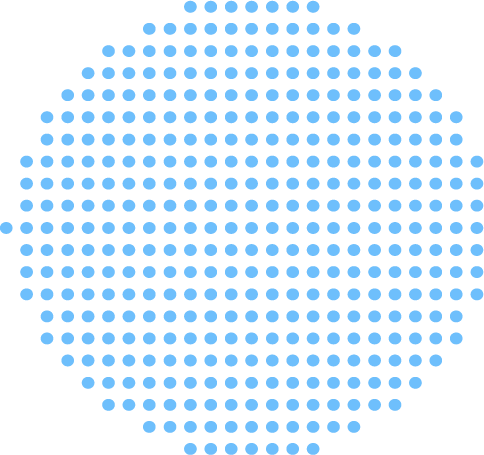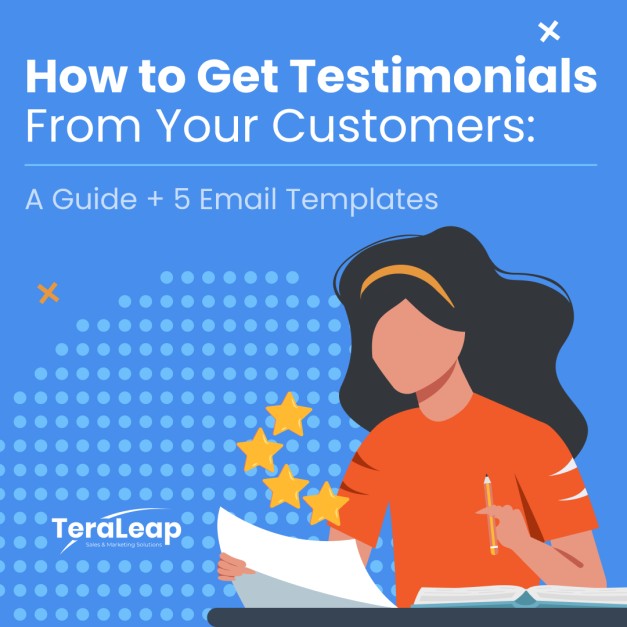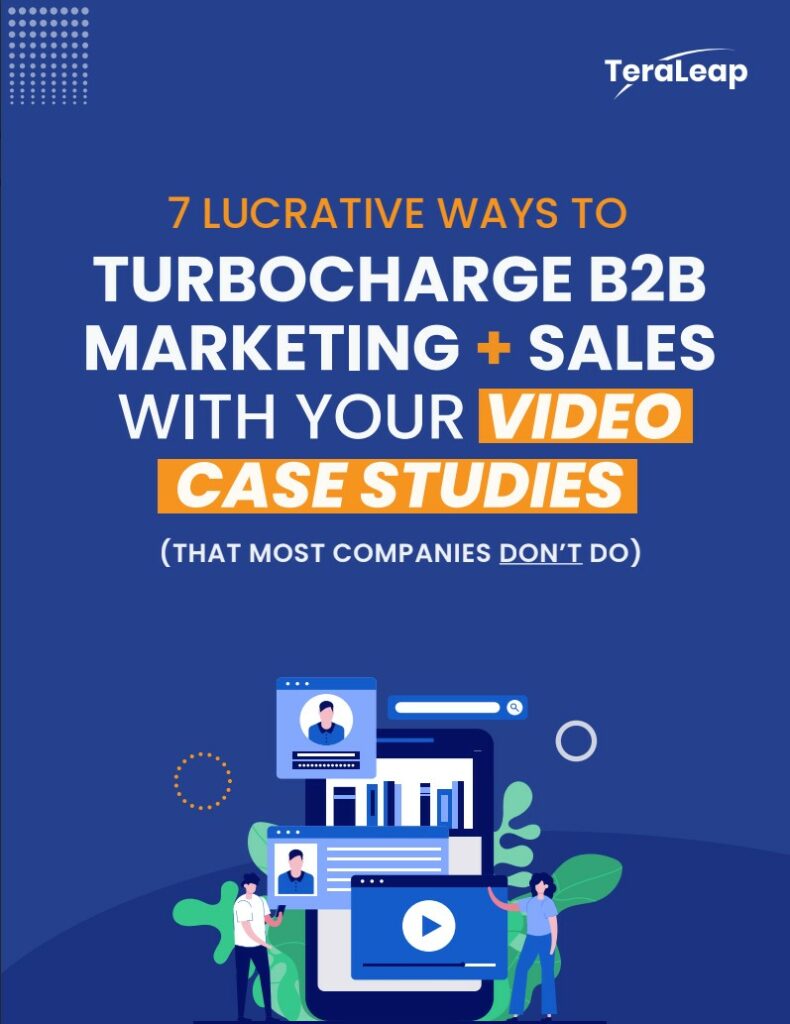Customer stories can be repackaged in so many ways it’s almost impossible to put them in order of value.
But after the Success Story Silo in our first article, we think this is potentially the most profitable way to repurpose your videos.
And customer success stories are perfect here because each and every one, when done properly, contains a few powerfully persuasive elements that target your prospects’ pain points and ideal outcomes:
- Matching: Your customer success video is a credible snapshot of someone who, once upon a time, had the same problem as your prospects.
- Hope: Each story shows the hero of your video on the other side of that problem, where they can speak with authority on how they navigated the issue using your product.
- Empathy: Better yet, your prospects will instinctively empathize – your customers are putting the experience into words that resonate with your prospects, because they’ve lived the situation.
And these aspects are the essential components of an effective sales argument. That is:
- A deep understanding for your prospects’ problems stated in a way that agitates the emotions surrounding it (your customer’s experience)
- A believable offer to overcome the problem (your product)
And to show you how to do exactly that we have a proprietary formula that we developed and used to get a 4X ROAS.
As well as a modern, more positive formula that most people haven’t heard of (but works really well in the weird, turbulent times we’re living in.)
Finally, we’ll go through a few ways you can use the same formulas to make retargeting ads that move your prospects along yor funnel, affordably.
How To Do It With APRIL:
With this formula, we’ve generated a whopping 4.8X return on our own ad spend.
Not bad for an ad that costs little to nothing to produce from content you already have.
Here’s the summary:
- Attention-grabbing introduction for context
- Present a relatable hero
- Reveal a relatable problem
- Illustrate results (without revealing the solution)
- Leave a Call To Action
Let’s go through each of them.
Attention-grabbing introduction:
The most important element of any ad or sales message is getting the attention of your prospects.
Life is busy. We’re all bombarded with ads, offers, and clickbait whenever we’re online.
It’s vital to stand out from the noise.
Because even the best ad still has to be seen to work.
And without a great headline, you won’t get the initial attention you need.
You can try a few tactics to grab attention with your headline here:
- State the relatable problem from the video as a summary
- “We struggled to produce affordable video ads that gave us decent ROAS”
- Pick a fight with a common idea or practice in your industry:
- Most companies are misusing their customer success stories
- Present an impressive outcome through the lens of a counterintuitive action:
- Halve your ad spend, double your MQLs
- Lead with the dream state your prospects want:
- So many MQLs you’ll need a bigger team
- A quote based around a prospect’s concern:
- “I can’t believe how much money we wasted on bad ads”
- Or proof-based:
- Get 4.8X ROAS with this formula
One important note here is to never reveal the mechanism that brings the results you’re promising.
You need to leave what psychologists call an “information gap” for prospects to ponder over. Both in your headline and in the video itself.
First written about by George Loewenstein in 1996, the information gap states that when someone knows some, but not all, of the information around an idea, they become strongly motivated to fill in the gaps.
You can use this to build intrigue and keep a customer reading or watching.
Note: We suggest not using any branding here.
Don’t introduce your company.
Here’s why – by keeping a low profile in your ad and letting your customers speak for themselves you bypass people’s wariness towards hard-selling ads and leave them with a sense of tentative curiosity about your customer’s story.
You’re telling a story first.
And if that’s done well, prospects will get to know your brand and offer after the CTA.
Present a relatable hero
This is the easy bit when you’re using your customer success stories.
The sections of the video you use in your ad automatically place the speaker as the relatable hero facing a problem.
You can either use a team member or the ad copy text to introduce the speaker. At TeraLeap we often use the words:
“We interviewed [name, title] at [company] about [problem]. Here’s what they had to say about it.”
Reveal a relatable problem
Now cut to the section of your customer story where they discussed their ‘before’ state.
The more detailed, animated, and truthful this section is, the better.
You want to agitate your prospect’s emotions. As they watch this section you want them to be saying “Yes, that’s me. I have exactly that problem, and yes – it is so frustrating.”
Which is why it’s so important to use a professional interviewer. You need to put the prospect’s problem and the feelings it arouses at the forefront of their mind.
And you can only do that by getting your customer to open up and dig into what it felt like in that ‘before’ state.
This section of the video generates desire for a solution to the problem and builds trust by having a regular person speak to the issue (rather than your company.)
Illustrate results (without revealing the solution)
This section is optional. Often simply bringing up the problem from a relatable hero is enough to capture attention and get the click if the promise of a solution lies beyond.
However, if your customer has talked about the great results they’ve had, you can include an outcome section to solidify trust.
This can be as simple as using a short portion of your customer success video’s “Outcome” section – where they speak to the outcomes they’ve achieved with your product – skipping over the “How” of the solution entirely.
This creates a second information gap in the ad and keeps the prospect engaged by implying there’s valuable information behind the CTA that could benefit them.
You can also list, in bullet point form, the actual outcomes if they’re measurable and enticing.
Or, if you have a compelling video testimonial that uses words you’d never have thought of yourself to describe the problem in agonizing clarity, you might stop right there, and let the CTA do the rest of the work.
This is exactly what we did with our “Don’t do case studies” campaign you can see below:
Leave a Call to action
As with any ad, you’ll need to end with a CTA that directs the viewer to take the step that will solve their problem.
Two notes here:
- Be specific about what happens next to avoid generating any feelings of uncertainty about what will happen after the click.
- Avoid frictive words. These are any words that imply work or effort in order to get the result your prospects want.
E.g.
Not: ‘Learn how Mary tripled her ROAS in the full interview’
Instead: ‘Discover how Mary tripled her ROAS in her short video’
The CTA should then take the viewer through to a longer-form version of your customer success story, briefly reviewing the problem and then going on to showcase the ‘solution’ section and a full discussion of the ‘outcome’ section.
On this page is your second CTA for the desired action you need.
E.g. Signing up for a lead magnet, booking a demo, or learning more about your product via a tour page.
D.O.S. – Another Formula For These Trying Times
It’s no secret that the world has been a little… weird lately.
From pandemics to war to political upheaval, the daily news has given us all a newfound respect for the phrase “take nothing for granted.”
As a result, traditional formulas for ads, like Pain, Agitate, Solution might be hitting prospects with a little too much negativity.
But there’s a fresh formula that leads with something more positive. It’s called D.O.S.
Desire: Begin your ad with the desire your prospect has. When using your video case studies, think of the section of the interview where you’re asking “What made you come to us?”
Obstacle: Show that desire is limited by obstacles that are relatable to your prospect. This would be the “What stopped you from doing this yourself?” portion of your interview.
Solution: The solution your company offers. When using this for an ad, focus on the outcomes your clients have had, not the nuts and bolts of how you do it.
As always, tailor your ad for your market and disregard advice if it counteracts sensible judgment.
Retargeting Power: Objection videos revisited
You can also use your customer stories in your retargeting campaigns.
As you generate more and more of these videos you’ll be collecting priceless data on the ‘hesitations’ your customers have around your product.
These concerns often center around issues like product price, ease of use, belief in the outcome, specific features, etc.
With the right interview approach, you can get a before/after look at what these hesitations were and whether they were justified or not.
Besides giving you valuable data for your sales, marketing, and customer experience teams to improve your messaging and products, these sections themselves can be put into short clips and used in your retargeting efforts.
A study by HubSpot in 2022 found that 84% of consumers said watching a brand’s video convinced them to make a purchase or subscribe to a service.17
And if you know that most of your customers were worried about the complexity of your product before they purchased, but in using it they discovered it was actually as simple as pie – you have a powerful way to disarm a prominent objection in your prospects…
…by showing your actual customers talking about how that worry was unfounded.
And it’s especially effective because it’s not just your company saying “it’s easy – trust us!”
It’s a real person talking about their real experience using your product.
The trust is baked in.
For your prospects, it will feel like you’re in their heads, answering their questions before they’ve even verbalized them – which adds yet another layer of brand trust while simultaneously helping to shorten your sales cycle.
How To Do It:
If you gather demographic data on your prospect’s objections you can target these objections with pinpoint accuracy.
For instance, you might discover two objections from your demographics:
- You find that CMOs looking to buy your product are concerned about training their team to use it.
- But CEOs running smaller companies are more concerned about making a long-term commitment to a product they’re not sure about yet.
Knowing this allows you to precisely target your audiences with the power of video testimonials.
So in response, you might:
- Target the CMOs with video testimonials from other CMOs speaking to…
- The ease of training
- The usefulness of the materials you offer for free
- And the fantastic customer service team that held their hand as they got up to speed
- Target the small-biz CEOs with…
- Testimonials from other CEOs talking about the free trial or the money-back guarantee you offer
So by the time your MQLs become SQLs, their objections have been handled.
If you’re concerned about overwhelming prospects with too much video, let this stat from a Wyzowl report in 2022 put your mind at ease:
88% of people said they’d like to see more videos from brands.18
Prospects want to see your brand’s video content, and giving it to them can help you sell better. It’s a win-win.
Retargeting: Product/benefits focused
Another way to use customer success stories in your retargeting campaigns is by targeting the most desirable outcomes of your product.
Once you’ve collected enough video testimonials, you’ll have data on what outcomes were most valued by your customers, if you’ve never run research on this you might even be surprised by what you find.
It’s yet another long-term advantage of regular customer success story collection.
And you can use this data to specifically target prospects in your funnel with video proof of outcomes they may not yet realize they want.
When they connect the dots between your product and that dream outcome, you create a powerfully motivated prospect.
And as above, if you discover these ideal outcomes differ by demographic, you can more precisely target them in your remarketing campaigns – particularly useful in Account Based Marketing (ABM) efforts, where you can target that specific industry’s objections.
Conclusion:
There you have it. Two formulas to use your customer success stories as ads, plus options for remarketing strategies that will handle hesitancies and connect with your prospects.
Not bad for an asset you (hopefully) already have.
Not to mention all the other uses for the same asset that we’ve shown off in this series so far.
Remember, we achieved a 4x ROAS with this exact strategy.
And there’s no reason it couldn’t be refined further.
If you’re not subscribed already, sign up below for access to the full value of our 7-part series on the use cases for customer success stories.

Sign up for your free access to the series here
In our next article, Success Stories on Social Media, we’ll be covering the myriad use cases for video case studies there.
Including
- A summary of the very latest data from 2022 on the big social media companies
- How to generate content based on ideas your customers have shared in interviews
- And how to restructure your customer success content for the platforms



